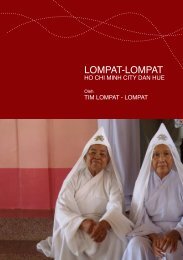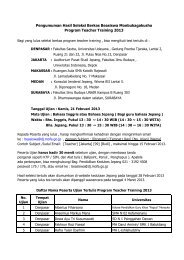9700_y16_sy
9700_y16_sy
9700_y16_sy
You also want an ePaper? Increase the reach of your titles
YUMPU automatically turns print PDFs into web optimized ePapers that Google loves.
Cambridge International AS and A Level Biology <strong>9700</strong> <strong>sy</strong>llabus Practical assessment<br />
Presentation of Data and Observations (PDO):<br />
These marks are awarded for three strands of skills:<br />
• Recording data and observations<br />
• Displaying calculations and reasoning<br />
• Data or observations layout.<br />
Recording data and observations<br />
This strand uses a light microscope, prepared slides and photomicrographs.<br />
Candidates should be able to:<br />
• Record the fine details of the specimen including drawing of detailed shapes of layers or outlines of<br />
specimens in plan diagrams and drawing of the shape and position of observable cell organelles in cells.<br />
Displaying calculations and reasoning<br />
This strand uses a light microscope, prepared slides and photomicrographs.<br />
Candidates should be able to show calculations, clearly showing all the steps in the calculation and their<br />
reasoning, including:<br />
• The calibration of the eyepiece graticule<br />
• The actual size (using an eyepiece graticule or magnification scale bar)<br />
• The linear magnification<br />
• The total number, e.g. stomata per unit of area (for example field of view)<br />
• The mean measurement of length or number<br />
• Determining the simplest ratio (expressed as larger whole number to smaller whole number, to the<br />
lowest common denominator)<br />
• Using the correct number of significant figures for calculated quantities.<br />
Data or observations layout<br />
This strand uses a light microscope, prepared slides and photomicrographs.<br />
Candidates should be able to:<br />
• Make drawings, using a sharp pencil, to give finely drawn lines. Drawings should:<br />
– have clear, sharp, unbroken lines<br />
– be unshaded<br />
– use most of the available space to show all the features observed in the specimen<br />
• Organise comparative observations, showing differences and/or similarities, of specimens of biological<br />
material.<br />
Analysis (interpretation of data or observations), conclusions and evaluation (ACE)<br />
These marks are awarded for three strands of skills:<br />
• Interpreting data or observations and identifying sources of error<br />
• Drawing conclusions<br />
• Suggesting improvements or modifications to extend investigation.<br />
56 www.cie.org.uk/alevel Back to contents page





